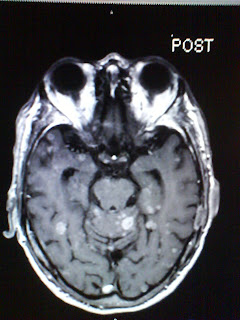Clinicals are still going smoothly. I am learning a lot. We have two new radiologist and one of them has a thing for MRI so he has been changing many of our protocols. We have also done a lot more abdomen MRIs than normal so I am beginning to get very familiar and comfortable with them. We are using a new contrast called Eovist that is specially designed for liver lesion enhancment. The magnet we work on is a Philips Acheiva 1.5T. It is a closed magnet but seems more open than others because it has a short bore. The short bore is very nice for the patients but sometimes it causes fat sat issues with our images. The lead tech said they have had problems with it ever since they got it and Philips said it is just something the short bore magnets run into sometimes. It usually only comes up when scanning feet and breast. One end of the foot might fat sat and the other not. It is really frustrating when doing a breast MRI because they are so lengthy. The majority of the time the fat sat does not work properly on patients with breast implants and we have to make different adjustments with techniques and factors and just keep running scans and keep changing factors until it works. Not the same changes work with every patient, it is like certain things work according to the patients tissue make up. I'm beginning to learn what adjustments to make with the shim box, spir and spair, etc. All in all it is a great learning experience having to know what to do when something doesn't go completely as planned.







.jpg)